CATTLE, COWS AND OXEN
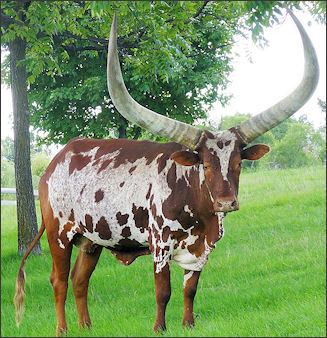
African AnKole (Watusi) cattle Cattle have described as the most important animal to mankind. People eat their meat and drink their milk, wear shoes and jacket made of cattle leather and use them to pull plows and carts. The word cattle was once used to describe all kinds of domesticated animals. It comes from the Latin word "capitale," which means wealth or property. The scientific name for cattle is bovine.
A male bovine is called a bull. A female is called a cow, and sometimes a heifer. Young are called calves. Bullocks are castrated young bulls and steers are castrated older bulls. Spayed heifers are desexualized females. A group of cattle is called a herd.
Oxen are not a special breed of cattle, nor are they hybrids like mules. An ox is a steer over the age of four that has been trained to work. A younger ox is called a working steer. A steer of any breed can become an ox.
Nearly all beef bovine become steers. Very few die of natural causes. They are usually slaughtered before they are 16 months old. Most dairy cattle are females. Dairy cows, bulls and oxen usually end up as beef, usually hamburger.
Bovids (Antelopes, Cattle, Gazelles, Goats, Sheep)
Domesticated cattle are bovids. Bovids (Bovidae) are the largest of 10 extant families within Artiodactyla, consisting of more than 140 extant and 300 extinct species. According to Animal Diversity Web: Designation of subfamilies within Bovidae has been controversial and many experts disagree about whether Bovidae is monophyletic (group of organisms that evolved from a single common ancestor) or not. [Source: Whitney Gomez; Tamatha A. Patterson; Jonathon Swinton; John Berini, Animal Diversity Web (ADW) /=]
Wild bovids can be found throughout Africa, much of Europe, Asia, and North America and characteristically inhabit grasslands. Their dentition, unguligrade limb morphology, and gastrointestinal specialization likely evolved as a result of their grazing lifestyle. All bovids have four-chambered, ruminating stomachs and at least one pair of horns, which are generally present on both sexes.
While as many as 10 and as few as five subfamilies have been suggested, the intersection of molecular, morphological, and fossil evidence suggests eight distinct subfamilies: Aepycerotinae (impalas), Alcelaphinae (bonteboks, hartebeest, wildebeest, and relatives), Antilopinae (antelopes, dik-diks, gazelles, and relatives), Bovinae (bison, buffalos, cattle, and relatives), Caprinae (chamois, goats, serows, sheep, and relatives), Cephalophinae (duikers), Hippotraginae (addax, oryxes, roan antelopes, sable antelopes, and relatives), and Reduncinae (reedbucks, waterbucks, and relatives).
See Separate Article: BOVIDS: CHARACTERISTICS, BEHAVIOR, SUBFAMILIES factsanddetails.com
Artiodactyls (Even-Toed Ungulates)
Bovids are artiodactyls. Artiodactyls are the most diverse, large, terrestrial mammals alive today. According to Animal Diversity Web: They are the fifth largest order of mammals, consisting of 10 families, 80 genera, and approximately 210 species. As would be expected in such a diverse group, artiodactyls exhibit exceptional variation in body size and structure. Body mass ranges from 4000 kilograms in hippos to two kilograms in lesser Malay mouse deer. Height ranges from five meters in giraffes to 23 centimeters in lesser Malay mouse deer. [Source: Erika Etnyre; Jenna Lande; Alison Mckenna; John Berini, Animal Diversity Web (ADW) /=]
Artiodactyls are paraxonic, that is, the plane of symmetry of each foot passes between the third and fourth digits. In all species, the number of digits is reduced by the loss of the first digit (i.e., thumb), and many species have second and fifth digits that are reduced in size. The third and fourth digits, however, remain large and bear weight in all artiodactyls. This pattern has earned them their name, Artiodactyla, which means "even-toed". In contrast, the plane of symmetry in perissodactyls (i.e., odd-toed ungulates) runs down the third toe. The most extreme toe reduction in artiodactyls, living or extinct, can be seen in antelope and deer, which have just two functional (weight-bearing) digits on each foot. In these animals, the third and fourth metapodials fuse, partially or completely, to form a single bone called a cannon bone. In the hind limb of these species, the bones of the ankle are also reduced in number, and the astragalus becomes the main weight-bearing bone. These traits are probably adaptations for running fast and efficiently. /=\
Artiodactyls are divided into three suborders. 1) Suiformes includes the suids, tayassuids and hippos, including a number of extinct families. These animals do not ruminate (chew their cud) and their stomachs may be simple and one-chambered or have up to three chambers. Their feet are usually 4-toed (but at least slightly paraxonic). They have bunodont cheek teeth, and canines are present and tusk-like. 2) The suborder Tylopoda contains a single living family, Camelidae. Modern tylopods have a 3-chambered, ruminating stomach. Their third and fourth metapodials are fused near the body but separate distally, forming a Y-shaped cannon bone. The navicular and cuboid bones of the ankle are not fused, a primitive condition that separates tylopods from the third suborder, Ruminantia. 3) This last suborder includes the families Tragulidae, Giraffidae, Cervidae, Moschidae, Antilocapridae, and Bovidae, as well as a number of extinct groups. In addition to having fused naviculars and cuboids, this suborder is characterized by a series of traits including missing upper incisors, often (but not always) reduced or absent upper canines, selenodont cheek teeth, a three or 4-chambered stomach, and third and fourth metapodials that are often partially or completely fused. /=\
See Separate Article: ARTIODACTYLS (EVEN-TOED UNGULATES): CHARACTERISTICS, BEHAVIOR, REPRODUCTION factsanddetails.com
World’s Top Cattle Exporting and Importing Countries
World’s Top Exporters of Cattle (2020): 1) France: 1622105 head; 2) Australia: 1109817 head; 3) Mexico: 905859 head; 4) Germany: 760612 head; 5) Canada: 674749 head; 6) France: 506510 tonnes; 7) Mali: 500000 head; 8) Netherlands: 476407 head; 9) United States: 320721 head; 10) Thailand: 319729 head; 11) Spain: 313358 head; 12) Brazil: 308433 head; 13) Ireland: 291329 head; 14) Colombia: 263149 head; 15) Belgium: 259873 head; 16) Romania: 226541 head; 17) Czechia: 221680 head; 18) Hungary: 175731 head; 19) Netherlands: 127554 tonnes; 20) Portugal: 125533 head: [Source: FAOSTAT, Food and Agriculture Organization (U.N.), fao.org]
World’s Top Exporters (in value terms) of Cattle (2020): 1) France: US$1633164,000; 2) Australia: US$1122499,000; 3) Canada: US$837009,000; 4) Mexico: US$476784,000; 5) Spain: US$346927,000; 6) United States: US$291207,000; 7) Germany: US$285957,000; 8) Netherlands: US$257454,000; 9) Brazil: US$217152,000; 10) Czechia: US$187770,000; 11) Hungary: US$183823,000; 12) Belgium: US$176590,000; 13) New Zealand: US$175786,000; 14) Thailand: US$174203,000; 15) Romania: US$161477,000; 16) Colombia: US$143849,000; 17) Croatia: US$135127,000; 18) Portugal: US$127654,000; 19) Ireland: US$124611,000; 20) Slovenia: US$105106,000
World’s Top Importers (in value terms) of Cattle (2020): 1) United States: US$1768573,000; 2) Italy: US$1416698,000; 3) Vietnam: US$650853,000; 4) China: US$487158,000; 5) Indonesia: US$430716,000; 6) Turkey: US$410707,000; 7) Netherlands: US$354828,000; 8) Lebanon: US$283407,000; 9) Spain: US$271345,000; 10) Israel: US$234536,000; 11) Algeria: US$216082,000; 12) Canada: US$200248,000; 13) Iraq: US$155662,000; 14) Egypt: US$152014,000; 15) Laos: US$141656,000; 16) Russia: US$133802,000; 17) Belgium: US$131154,000; 18) Libya: US$116283,000; 19) Austria: US$110815,000; 20) South Africa: US$105256,000
History and Domestication of Cattle
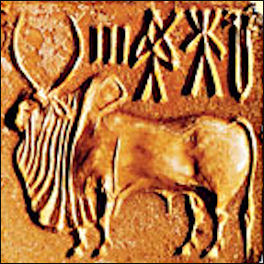
4000-year-old Indus Valley image Modern cattle are descended from two species — wild cattle (“Bos taurus” ) of Europe and the humpbacked (zebu) cattle of Asia (“Bos Indicus” ). Most species in Europe, Oceania and the Western Hemisphere evolved from two subspecies of “Bos taurus” “the long horned aurochs (“taurus primegenius” also known as “Bos primigenius” ) and to a lesser extent from the relatively small short-horned Celtic Ox (“taurus longifrons” ).
Cattle are believed to have been domesticated from aurochs from Western Asia between 8,000 and 10,000 years ago. Evidence of domesticated cattle has been found in archeological sites dated to 6400 B.C. Cattle appears to have been domesticated separately in Africa — with the earliest evidence of this happening occurring in northwestern Sudan about 8,000 years ago.
Cattle were used for transportation purposes long before horses and figured prominently in many religions and myths (Hindu holy cows, the half-bull-half man Minotaur, the images of the Golden Calf that made Moses so angry). Bulls were sacrificed by the ancient Greeks, Romans and Druids but treated with reverence by Egyptians (black bulls in particular were given harems and palaces because they were believed to be related to the bull-god Apis).
During most of their careers cattle were used as work animals. It is only in the past couple of centuries or that they have been extensively bred for milk and meat. In England oxen were the main beasts of burden until the 1500s when they began to be replaced by horses on a large scale.
Modern livestock breeding procedures were invented in the late 18th century by an English farmer named Robert Blackwell. A bull was first cloned in 1999. This lead to a debate about the safety of milk and meat from clones.
See Separate Article FIRST CATTLE AND COW DOMESTICATION factsanddetails.com
Cattle Characteristics
Cattle stand about five feet at the shoulder and generally weigh between 1,000 to 1,700 pounds, although some weigh more than a ton. Members of the ox family, they have cloven hooves, even numbered toes, hollow horns and flat vegetarian teeth ideal for tearing up grass. A cow’s udder has four sections to hold milk. Cattle can withstand heat better than horses.
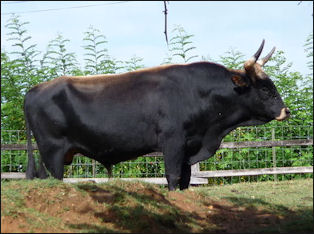
heck cattle,
close relative of auroch Cows, water buffalo and bullocks have a life span of about 20 years. Without hormones and chemical cows mature between 15 and 17 month and bulls mature at around one year. Farmers tell their age by looking at their horns and teeth.
Cattle have 32 teeth but do not have teeth in the front of the upper jaw. They grasp rooted grass in the mouth and tear the blades free with sideways movements of the head. This reduces the amount of dirt they would get if they pulled up the grass by the roots. Ruminant have very strong molars. These allows them to chew the tough cellulose found in grass.
Cattle, sheep, goats, yaks, buffalo, deer, antelopes, giraffes, and their relatives are ruminants — cud-chewing mammals that have a distinctive digestive system designed to obtain nutrients from large amounts of nutrient-poor grass. Ruminants evolved about 20 million years ago in North America and migrated from there to Europe and Asia and to a lesser extent South America, where they never became widespread.
See Ruminants Under MAMMALS: HAIR, HIBERNATION AND RUMINANTS factsanddetails.com
Hormones, Antibiotics and Humane Treatment of Farm Animals
Animals are given growth hormones to make them grow bigger, faster. Hormones drastically increases the rate of mastitis (breast infection) \ which increases the need for antibiotics. Antibiotics are also given to animals to speed growth and help sick animals.
The amount of antibiotics used in animal feeds far exceeds that found in human medicine. Antibiotic residues are found in meat and milk. Some food pathogens are becoming resistant to antibiotics because of overexposure. Some worry that overexposure will make antibiotic less effective on humans.
In 2012, the U.S. Food and Drug Administration announced it would ask drug makers and veterinarians to drastically reduce the widespread use of antibiotics to promote the growth of commercial livestock. It has been suggested that the use of antibiotics has helped some infectious diseases gain the upper hand against medicines. [Source: Melissa Healy, Los Angeles Times, April 11, 2012]
McDonald’s and others are putting pressure on livestock producers to treat their animals more humanely by doing things such as giving the animals more space and allowing more outdoor time and social contact and killing them in the most painless way possible.
Cattle Behavior

Cow on Delhi street In the wild, relatives of wild cattle live in herds headed by a king bull that watches over 25 to 50 cows. If a rival defeats the king he takes over all the cows. See 13th century Cattle Above.
Cows traditionally become sexually mature after two years and generally give birth to one calf after a nine month gestation period. Commercial cows are mated when they are 15 to 20 months. Cows determine their calves by smell. If a calf is still born, ranchers sometimes skin the dead calf and give the scent to an orphan that is adopted by the mother.
Cows have been easily domesticated because they are so passive. They will eat most anything. Feral cows return to eating grasses as their ancient forebears, the aurochs, did.
A study by German and Czech researchers published in the August 2008 issue of Proceedings of the National Academy of Sciences determined that cows can detect which direction is north, a conclusion reached by examining satellite photos of cows around the world and finding that 60 to 70 percent of them, whether resting or grazing, aligned their bodies in a north-south direction. The researchers also noted that things like wind direction or arrangements of fences could be factors in determining which direction the animals aligned themselves.
Woman Killed by Herd of Cows
In 1998, The Telegraph reported: A widow was trampled to death by a herd of cows on a public footpath bordering their field as she took her dogs for an evening walk. Two other walkers found the body of Grace Aldridge, 67, next to the path on Sunday evening. Two of her four dogs were also killed and another was sitting in a distressed state next to Mrs Aldridge. [Source: Michael Fleet, The Telegraph, June 1, 1998]
She had been taking her normal walk in the village of Lyminster, West Sussex, when the animals trampled her and her dogs. There had been 60 Charolais-cross-Limousin cows and calves in the field, together with a bull. A spokesman for the National Farmers' Union said: "Cattle are not aggressive animals but they will react if they feel threatened and the dogs could have made them react." The cows were yesterday moved from the field where Mrs Aldridge died. Mrs Aldridge had been a widow for more than 30 years and lived alone with her Sheltie dogs, which she used to breed.
Working Oxen
Plowing oxen have a working life of ten years or more. They do not require elaborate harnesses like horses. They wear a simple yoke and respond to a driver's verbal commands. Plowing oxen often work in pairs. One is trained as a right-hand oxen and the other is trained as a left-hand oxen. Once trained the remain on their respective side their entire working lives.
It makes more sense to use cattle and other traction animals as beasts of burdens and plowing machines than to slaughter them for food. This is one reason why meat is in such short supply in areas in which cattle are common sights.
In the late 1970s, Ringling Brother-Barnum and Bailey Circus featured a dancing cow act.
See Sacred Cows, Hinduism Under World Religion
Cattle Industry
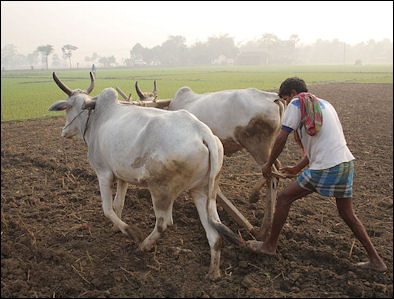
cattle in West BengalDomesticated cattle have traditionally been branded with hot irons to show ownership, kept in pens and fed in feedlots. Those that are raised for meat are slaughtered between 6 months and 18 months. Desexualized males and females are more docile. They are gain weight quickly and produce finer-grained meat. In addition to meat, cattle also produce leather, milk, butter, cheese, glue, medicines, hair and binding plasters.
Industrially-raised cattle are better off than industrially-raised hogs or egg-laying chickens. They at least get to live outdoors. Still they spend much of their time standing ankle deep in their own waste, are pumped full of growth hormones and antibiotics and eat food made from things like peanut hulls, almond shells, and waste from bakeries that sometimes makes them sick.
Depending the availability of grass or other kinds of food, each head of cattle needs the food from about two acres of pasture a year. Cattle are fed hormones to make them grow faster and are ready to slaughter at six or seven months.
Humane, nonstressful slaughtering is becoming the industry standard in the United States. By law all animals must be unconscious before they are slaughtered. In many cases the are stunned first with air hammers, pistols or powerful electric prods. In the old days they were clubbed.
Most cattle have been produced from artificial insemination. Prized bulls can make their owners rich because they can fertilize tens of thousands of cows through artificial insemination. Because artificial insemination is so widespread many cattle are very closely related to one another and thus potentially vulnerable to the same diseases.
Beef prices have gone down due to an oversupply meat in the United States.
Type of Cattle
Today there are 277 breeds of cattle, divided in beef, dairy and draft classifications. The most well-known dairy breeds are Holstein-Friesian, Jersey, Guernsey, Brown Swiss and Ayrshire. Among the most common beef breeds are Hereford, Zebu (Brahman), Aberdeen-Angus, Shorthorn, Santa Gertrudis, Galloway, Africander, Charolais and Simmental. See Early History of Cattle, Above
Zebu cattle thrive in hot, dry conditions. They have been crossbred with other varieties to produce breeds able to withstand hot, arid conditions and produce lots of meat. They are also used in the bull riding events at rodeos.
Cattlelike animals include the domesticated Mithan, believed to have been domesticated from the gaur of Southeast Asia, or gayal, of southern India at some unknown date; and Bali cattle, which are believed to have been domesticated from banteng (or bantinn, banting or tsaine) of India, Burma, Southeast Asia and Indonesia at some unknown date.
Grain-Fed Versus Grass-Fed Cattle and Mini-Cows
Corn-fed beef has a mild flavor and can be very tender. Even cattle that are grass fed are sometimes finished off with 15 to 30 days of grain feeding to give the meat a texture that customers like.
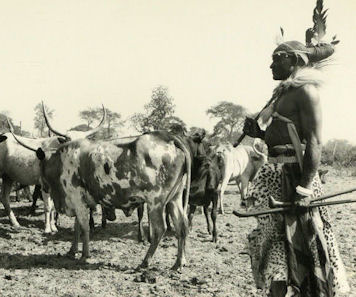
Cattle in Africa Grass-fed beef is better-tasting and has superior marbling (the blending of fat into the meat) to grain-fed, pen-raised beef. Grass-fed cattle are healthier and better exercised but require more land to raise and produces four time more methane than grain-fed cattle.
True grass fed cattle are put on grass as soon as they are weaned and eat grass as long as it is available. When no fresh grass is available they are fed hay and silage. Hormones and antibiotics are forbidden. Some grass beef is tough and tasteless but the better stuff has a deep, beefy taste. To produce good grass-fed beef you need breeds that do well on grass rather than grain and you need to have the best grass for the breed of cattle you have and for the locale where the cattle are raised.
Lately in the United States there a shift among American beef consumers to chose grass-fed beef, because it s better for you (lower in total fat and contains higher levels of beneficial omega-3 fatty acids) and more humane to the cattle who produce it.
The high price of grains has generated interest in stocky-bodied mini-cows — about half the size of normal ones — that consume about half as much feed as regular cows but produces 50 percent to 75 percent more of desirable rib eye and fillet cuts of meat. Mini-cows have not been genetically-engineered or cloned; they have been bred from small breeds first brought to the U.S. from Europe in the 1800s.
World’s Top Cattle Meat Producing Countries
World’s Top Producers of Cattle Meat (2020): 1) United States: 12357232 tonnes; 2) Brazil: 10100000 tonnes; 3) China: 6034215 tonnes; 4) Argentina: 3168472 tonnes; 5) Australia: 2371600 tonnes; 6) Mexico: 2081262 tonnes; 7) Russia: 1633742 tonnes; 8) France: 1434590 tonnes; 9) Canada: 1381940 tonnes; 10) Pakistan: 1179000 tonnes; 11) Germany: 1091000 tonnes; 12) South Africa: 1038688 tonnes; 13) Uzbekistan: 961772 tonnes; 14) Turkey: 961519 tonnes; 15) United Kingdom: 932000 tonnes; 16) India: 916581 tonnes; 17) Colombia: 743901 tonnes; 18) Italy: 732280 tonnes; 19) New Zealand: 701294 tonnes; 20) Spain: 677740 tonnes [Source: FAOSTAT, Food and Agriculture Organization (U.N.), fao.org. A tonne (or metric ton) is a metric unit of mass equivalent to 1,000 kilograms (kgs) or 2,204.6 pounds (lbs). A ton is an imperial unit of mass equivalent to 1,016.047 kg or 2,240 lbs.]
Top Cattle-Meat-Producing Countries in 2008 (Production, $1000; Production, metric tons, FAO): 1) United States of America, 23671464 , 11445000; 2) Brazil, 18727175 , 9054468; 3) China, 12068542 , 5835062; 4) Argentina, 5854059 , 2830400; 5) Australia, 4821250 , 2331043; 6) Mexico, 3879 , 1875700; 7) Russian Federation, 3629055 , 1754624; 8) France, 3625074 , 1752700; 9) Germany, 2778010 , 1343150; 10) Canada, 2647437 , 1280019; 11) Colombia, 1926041 , 931228; 12) India, 1853417 , 896721; 13) Italy, 1840769 , 890000; 14) United Kingdom, 1818018 , 879000; 15) South Africa, 1580372 , 764100; 16) Pakistan, 1406209 , 679893; 17) Uruguay, 1327515 , 599498; 18) New Zealand, 1321661 , 639014; 19) Spain, 1223684 , 471886; 20) Ireland, 1213799 , 586864;
The worlds top producers of beef and veal in 1988 were: : 1) the U.S., 2) the USSR; 3) Argentina, 4) Brazil, 5) France, 6) W. Germany, 7) Australia, 8) Mexico, 9) Italy and 10) Canada. The main cattle producing nations in the 1970s were: 1) India; 2) the United States; 3) Russia; 4) Brazil; 5) China; 6) Argentina; 7) Pakistan; 8) Mexico; 9) Ethiopia; 10) France; 11) Australia.
World’s Top Beef and Cattle Meat Exporting Countries
World’s Top Exporters of Cattle Meat (2020): 1) Poland: 196825 tonnes; 2) Netherlands: 162975 tonnes; 3) France: 148182 tonnes; 4) Spain: 143253 tonnes; 5) Germany: 136524 tonnes; 6) Australia: 127010 tonnes; 7) United States: 121093 tonnes; 8) Mexico: 104322 tonnes; 9) Belarus: 84925 tonnes; 10) New Zealand: 73505 tonnes; 11) Belgium: 71619 tonnes; 12) Pakistan: 66935 tonnes; 13) Argentina: 62032 tonnes; 14) Uruguay: 49008 tonnes; 15) Italy: 48941 tonnes; 16) Canada: 40554 tonnes; 17) Austria: 39836 tonnes; 18) Ireland: 34370 tonnes; 19) United Kingdom: 33312 tonnes; 20) Denmark: 32643 tonnes
World’s Top Exporters (in value terms) of Cattle Meat (2020): 1) United States: US$806551,000; 2) Netherlands: US$796065,000; 3) Poland: US$720049,000; 4) France: US$703779,000; 5) Spain: US$620131,000; 6) Germany: US$524605,000; 7) Mexico: US$519339,000; 8) Australia: US$419222,000; 9) Canada: US$346509,000; 10) Belgium: US$345040,000; 11) Belarus: US$293082,000; 12) Pakistan: US$237768,000; 13) New Zealand: US$215340,000; 14) Austria: US$166317,000; 15) Uruguay: US$159606,000; 16) Italy: US$154296,000; 17) Ireland: US$140188,000; 18) Argentina: US$130095,000; 19) Denmark: US$124901,000; 20) United Kingdom: US$110368,000
World’s Top Exporters of Beef and Veal (2020): 1) Brazil: 1715557 tonnes; 2) Australia: 976697 tonnes; 3) United States: 821919 tonnes; 4) Argentina: 553945 tonnes; 5) New Zealand: 398237 tonnes; 6) Canada: 338013 tonnes; 7) Ireland: 325729 tonnes; 8) Netherlands: 285134 tonnes; 9) Paraguay: 271105 tonnes; 10) Uruguay: 255536 tonnes; 11) Poland: 176929 tonnes; 12) Mexico: 162429 tonnes; 13) Nicaragua: 106939 tonnes; 14) Germany: 99016 tonnes; 15) United Kingdom: 83500 tonnes; 16) Belarus: 63839 tonnes; 17) Austria: 60232 tonnes; 18) Spain: 56308 tonnes; 19) Belgium: 46671 tonnes; 20) Italy: 44779 tonnes
World’s Top Exporters (in value terms) of Beef and Veal (2020): 1) Brazil: US$7428848,000; 2) Australia: US$6196012,000; 3) United States: US$5747237,000; 4) Argentina: US$2576998,000; 5) New Zealand: US$2183195,000; 6) Netherlands: US$2025087,000; 7) Ireland: US$1972866,000; 8) Canada: US$1863507,000; 9) Uruguay: US$1397856,000; 10) Paraguay: US$1115940,000; 11) Mexico: US$1012761,000; 12) Poland: US$831898,000; 13) Germany: US$599059,000; 14) Nicaragua: US$487149,000; 15) United Kingdom: US$383461,000; 16) Austria: US$317058,000; 17) Belgium: US$281438,000; 18) France: US$272388,000; 19) Italy: US$270906,000; 20) Japan: US$270460,000
The worlds top exporters of beef and veal in 1988 were: 1) Australia, 2) W. Germany, 3) Brazil, 4) France, 5) New Zealand, 6) Ireland, 7) Argentina, 8) the Netherlands, 9) the U.S. and 10) Denmark.
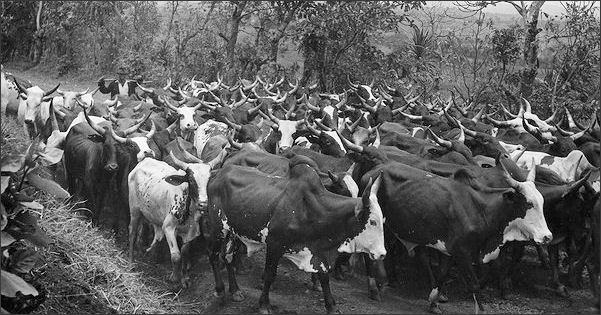
cattle in Cameroon
World’s Top Beef and Cattle Meat Importing Countries
World’s Top Importers of Cattle Meat (2020): 1) China: 297017 tonnes; 2) Netherlands: 229062 tonnes; 3) Italy: 200080 tonnes; 4) South Korea: 155081 tonnes; 5) United States: 125604 tonnes; 6) Germany: 123628 tonnes; 7) Greece: 81902 tonnes; 8) France: 65037 tonnes; 9) Portugal: 55956 tonnes; 10) Spain: 50177 tonnes; 11) United Arab Emirates: 39427 tonnes; 12) United Kingdom: 38172 tonnes; 13) Belgium: 35354 tonnes; 14) Indonesia: 27995 tonnes; 15) Austria: 27991 tonnes; 16) Bosnia and Herzegovina: 27607 tonnes; 17) Saudi Arabia: 23756 tonnes; 18) Uzbekistan: 20490 tonnes; 19) Kuwait: 17899 tonnes; 20) Kazakhstan: 16735 tonnes [Source: FAOSTAT, Food and Agriculture Organization (U.N.), fao.org]
World’s Top Importers (in value terms) of Cattle Meat (2020): 1) Italy: US$966905,000; 2) South Korea: US$880685,000; 3) China: US$779810,000; 4) United States: US$772561,000; 5) Netherlands: US$757570,000; 6) Germany: US$533743,000; 7) France: US$363527,000; 8) Greece: US$353937,000; 9) Spain: US$245614,000; 10) Portugal: US$235067,000; 11) Hong Kong: US$169978,000; 12) United Kingdom: US$168324,000; 13) United Arab Emirates: US$166587,000; 14) Mexico: US$153275,000; 15) Belgium: US$143683,000; 16) Kuwait: US$125875,000; 17) Saudi Arabia: US$104536,000; 18) Austria: US$98964,000; 19) Bosnia and Herzegovina: US$87499,000; 20) Canada: US$86805,000
World’s Top Importers of Beef and Veal (2020): 1) China: 1821277 tonnes; 2) United States: 946855 tonnes; 3) Japan: 598865 tonnes; 4) Hong Kong: 320645 tonnes; 5) South Korea: 288164 tonnes; 6) Chile: 251763 tonnes; 7) Russia: 247309 tonnes; 8) Germany: 218739 tonnes; 9) United Kingdom: 211188 tonnes; 10) Egypt: 180899 tonnes; 11) Netherlands: 146581 tonnes; 12) France: 144863 tonnes; 13) Malaysia: 144586 tonnes; 14) Canada: 140882 tonnes; 15) Indonesia: 139133 tonnes; 16) Taiwan: 137204 tonnes; 17) Italy: 105747 tonnes; 18) Philippines: 104004 tonnes; 19) United Arab Emirates: 101659 tonnes; 20) Iran: 100000 tonnes
World’s Top Importers (in value terms) of Beef and Veal (2020): 1) China: US$9399291,000; 2) United States: US$5657765,000; 3) Japan: US$3325496,000; 4) South Korea: US$2015359,000; 5) Hong Kong: US$1664145,000; 6) Germany: US$1532433,000; 7) Egypt: US$1236480,000; 8) Netherlands: US$1123703,000; 9) United Kingdom: US$1104988,000; 10) Chile: US$1071670,000; 11) Taiwan: US$1033111,000; 12) Russia: US$887539,000; 13) Canada: US$837932,000; 14) France: US$816408,000; 15) Italy: US$799227,000; 16) Israel: US$580952,000; 17) Indonesia: US$534613,000; 18) Malaysia: US$490315,000; 19) Mexico: US$473474,000; 20) Iran: US$450000,000
The worlds top consumers of beef and veal in 1988 were: 1) the U.S., 2) the USSR; 3) Argentina, 4) Brazil, 5) France, 6) Italy, 7) W. Germany, 8) Mexico, 9) the UK and 10) Canada.
World’s Top Exporting Countries of Beef Sausages and Preparations
World’s Top Exporters of Beef Preparations (2020): 1) Brazil: 110013 tonnes; 2) Ireland: 51994 tonnes; 3) United States: 35773 tonnes; 4) Germany: 34912 tonnes; 5) Argentina: 33768 tonnes; 6) Poland: 28280 tonnes; 7) France: 17527 tonnes; 8) Belgium: 13832 tonnes; 9) Jordan: 12885 tonnes; 10) New Zealand: 12550 tonnes; 11) Netherlands: 12257 tonnes; 12) Italy: 11229 tonnes; 13) Australia: 9790 tonnes; 14) China: 9008 tonnes; 15) Denmark: 8685 tonnes; 16) Uruguay: 8367 tonnes; 17) United Kingdom: 8324 tonnes; 18) United Arab Emirates: 7379 tonnes; 19) Russia: 6921 tonnes; 20) Belarus: 6805 tonnes [Source: FAOSTAT, Food and Agriculture Organization (U.N.), fao.org]

Bovidae Aubrac cattle
World’s Top Exporters (in value terms) of Beef Preparations (2020): 1) Brazil: US$605163,000; 2) Ireland: US$236358,000; 3) United States: US$233718,000; 4) Germany: US$181321,000; 5) Poland: US$130091,000; 6) New Zealand: US$116621,000; 7) Belgium: US$92890,000; 8) Argentina: US$88236,000; 9) France: US$78376,000; 10) Netherlands: US$68368,000; 11) Australia: US$66088,000; 12) China: US$56781,000; 13) Jordan: US$55584,000; 14) United Kingdom: US$53840,000; 15) Canada: US$51048,000; 16) Denmark: US$49141,000; 17) Uruguay: US$48397,000; 18) Italy: US$37187,000; 19) Belarus: US$28552,000; 20) Sweden: US$26908,000
World’s Top Exporters of Beef and Veal Sausages (2020): 1) Poland: 115940 tonnes; 2) Thailand: 17021 tonnes; 3) Jordan: 1937 tonnes; 4) United Arab Emirates: 1771 tonnes; 5) Saudi Arabia: 1733 tonnes; 6) Kuwait: 464 tonnes; 7) Morocco: 110 tonnes; 8) Oman: 28 tonnes; 9) Qatar: 23 tonnes; 10) Bahrain: 9 tonnes; 11) Barbados: 3 tonnes
World’s Top Exporters (in value terms) of Beef and Veal Sausages (2020): 1) Poland: US$419591,000; 2) Thailand: US$50201,000; 3) United Arab Emirates: US$6245,000; 4) Jordan: US$6240,000; 5) Saudi Arabia: US$3032,000; 6) Kuwait: US$1892,000; 7) Morocco: US$177,000; 8) Qatar: US$120,000; 9) Oman: US$63,000; 10) Bahrain: US$38,000; 11) Barbados: US$13,000; 12) Sudan: US$2,000; 13) Egypt: US$2,000
Image Sources: Wikimedia Commons
Text Sources: New York Times, Washington Post, Los Angeles Times, Times of London, Yomiuri Shimbun, The Guardian, National Geographic, The New Yorker, Time, Newsweek, Reuters, AP, Lonely Planet Guides, Compton’s Encyclopedia and various books and other publications.
Last updated April 2022
